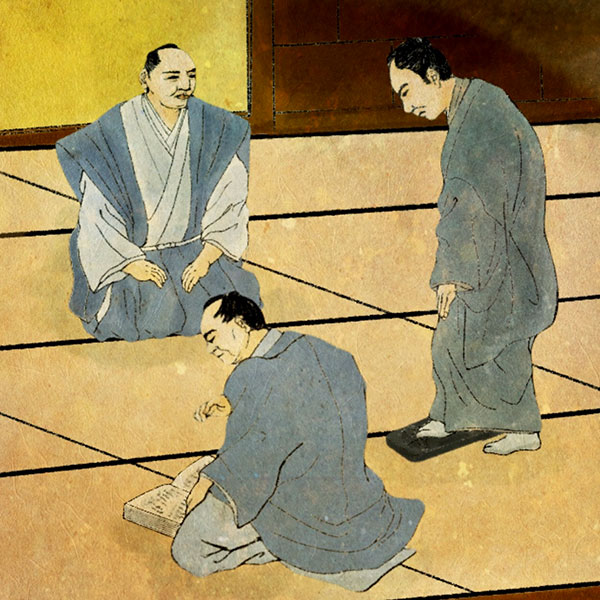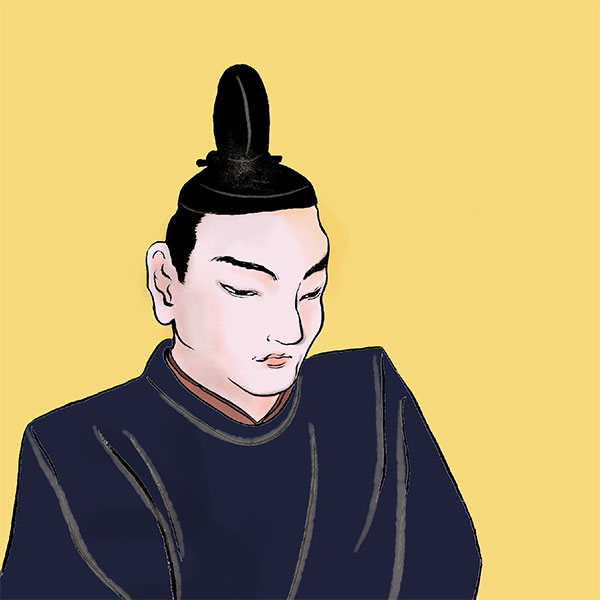Ban on Christianity (2/2)Ieyasu's ban on Christianity

ban on christianity
- Article category
- case file
- Incident name
- Prohibition of Christianity (1612)
- place
- Tokyo
- Related castles, temples and shrines

Edo castle
- people involved
The reasons why Ieyasu issued the ban on Christianity were concerns about the colonization of Japan by Christian countries that had existed since the era of Hideyoshi, the possibility that as the number of Christians increased, there was a possibility that Christians would turn into an uprising, and the Edo Shogunate. For example, if trade between the Shogunate and South Korea continued to be allowed under the control of the shogunate, the power of the feudal lords would grow stronger, and there was a possibility that some would challenge the shogunate.
If Christianity was banned, wouldn't it be a problem because trade with Spain would stop? Some people may think so, but during the Edo period, trade with non-Catholic countries such as Spain and Portugal was becoming more active, combining trade with South Korea and Christian missionary work. That's the Protestant Netherlands.
Originally, Ieyasu had ties to the Netherlands. In March 1600, the first Dutch ship, the Liefde, arrived in Japan. During the Toyotomi administration just before the Battle of Sekigahara, Ieyasu was in charge of inspections on the Lifde. Furthermore, he protected the surviving crew members from Jesuit (Catholic) missionaries who wanted to execute them, moved the Lifde to Uraga, and made some of the crew his vassals.
A famous example is Jan Joosten, who was given a red stamp and was active in trade.He is the origin of the name Yaesu, and there is a bronze statue of him in the plaza in front of Tokyo Station Marunouchi Station. British William Adams (Anjin Miura) was also on board the Liefde. Anjin came to be used by Ieyasu by conveying the latest information on European politics and religion, and he also served as a diplomatic advisor, conveying his knowledge of gunnery, shipbuilding, and navigation to the shogunate. It is also known for building Japan's first Western-style sailing ship in Ito.
Furthermore, it is said that Ieyasu used matchlock guns and gunpowder carried by the Liefde in the Battle of Sekigahara, indicating that Ieyasu had ties to the Netherlands even before the Edo Shogunate. The Dutch approached Ieyasu about trade, but the Protestant Netherlands considered missionary work and trade separate. Since it is possible to trade without accepting Christianity, I think it is natural that people would want to switch countries if there is such a country, especially after the Okamoto Daihachi Incident. By the way, England, which was also Protestant, followed the Dutch lead and started trading with Japan.
What is the content of Ieyasu's ban on Christianity?
So, what was Ieyasu's ban on Christianity? The one issued on March 21, 1612, targeted areas under the direct control of the shogunate, such as Edo, Kyoto, and Sunpu, and ordered the destruction of churches and the prohibition of Christian missionary work. Furthermore, he forced his Christian vassals to apostatize, and those who refused were forced to renounce Christianity.
A famous example is a Korean-born maid known as Julia Otaa, who refused to renounce her faith and was banished from Sunpu Castle and exiled to Izu Oshima. By the way, at this time, she was asked to become Ieyasu (70 years old)'s concubine. Even after Ieyasu was exiled, he continued to approach Julia Otaa, saying, ``If you obey me, I will pardon you,'' but Julia refused. For this reason, his penal colony changed to Niijima and Kozushima one after another, and it is said that he finally ended his life on Kozushima (there are various theories). Personally, this is an episode that makes me wonder.
After that, on December 19, 1614 (January 28, 1614), Ieyasu ordered Konchiin Suden to write the ``Passing Banten Ren''. Suden was the pocket sword of Ieyasu, who is known for drafting samurai laws. Ieyasu approved the draft written by Suden in one day, sent it to Hidetada Tokugawa for his seal, and notified all daimyo across the country on December 23rd. It happened so fast.
In terms of content, it positions Christianity as an ``evil sect that confuses God and Buddhism,'' and claims that ``Christianity is a means to modify and invade Japan.'' He has repeatedly warned in strong terms that if it is not banned, it will be a sign of great disaster, it will be a disaster for the nation, and it will be a disaster from heaven.
As a result of this ban, churches in Nagasaki and Kyoto were destroyed. Furthermore, in September 1614, approximately 400 missionaries and Christians were deported to Macau and Manila. It is well known that among these were Takayama Ukon and Naito Nyoyasu, who were known as Christian daimyo.
Christians disappeared due to the ban on Christianity, which was divided into stages...At this point, believers were overlooked without being executed. The missionaries also secretly continued their missionary work by secretly returning to Japan. The reason why the shogunate did not take thorough measures is said to be due to the influence of the Nanban trade with Christian countries.
After Ieyasu passed away in 1616, the second shogun, Hidetada Tokugawa, issued the ``Two Ports Restriction Order,'' emphasizing the prohibition of Christianity. Furthermore, after the ``Shimabara Rebellion'' by Christians, which lasted for about four months starting in October 1637, the Edo shogunate further prohibited missionary work and strictly suppressed Christians.
Reread the article on the ban on Christianity
- people involved

- WriterNaoko Kurimoto(Writer)I am a former travel industry magazine reporter. I have loved history, both Japanese and world history, since I was a child. I usually enjoy visiting temples and shrines, especially shrines, and often do ``pilgrimages to sacred places'' themed around historical figures. My favorite military commander is Ishida Mitsunari, my favorite castle is Kumamoto Castle, and my favorite castle ruins is Hagi Castle. My heart flutters when I see the ruins of battle castles and the stone walls of castle ruins.





